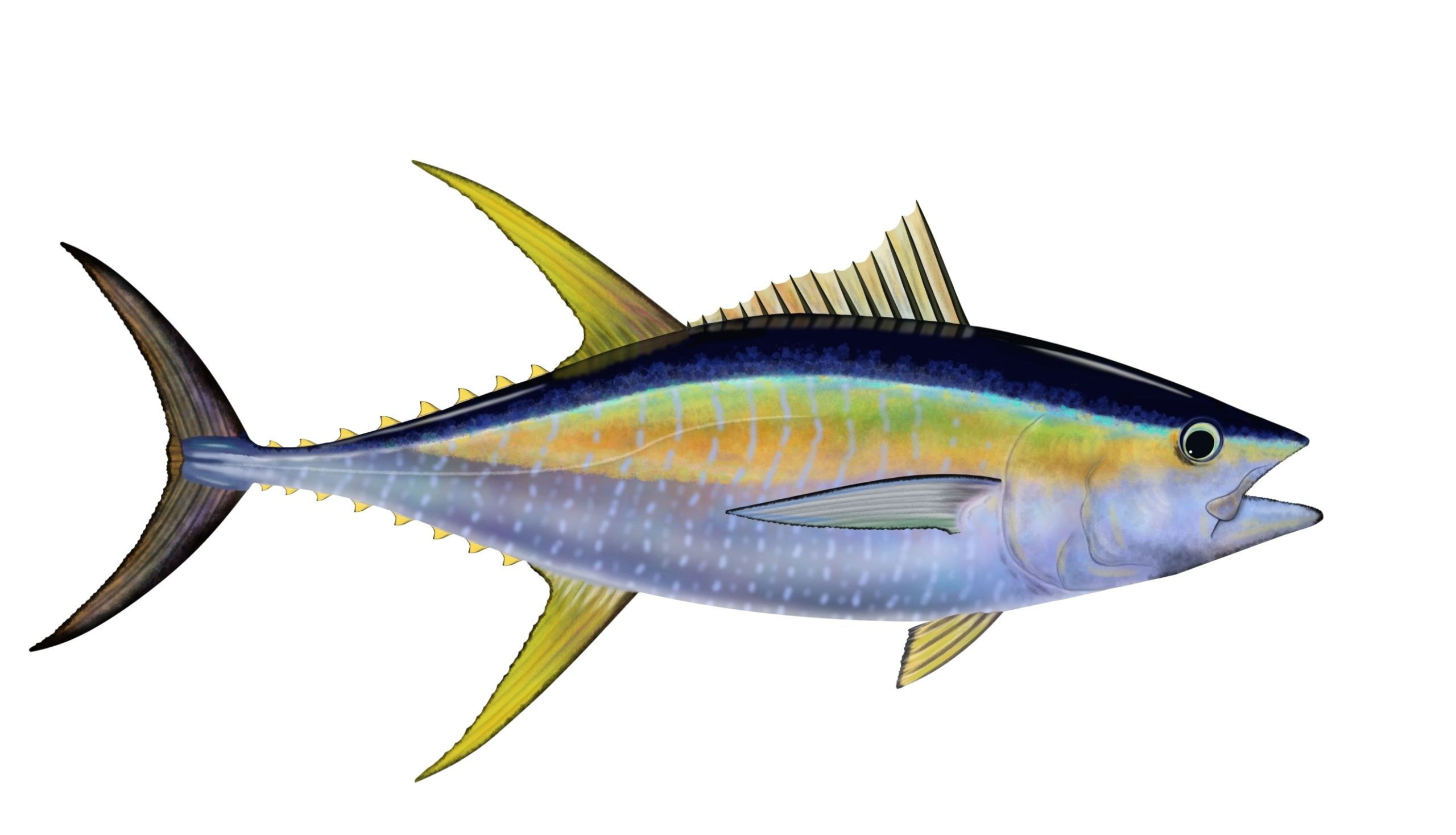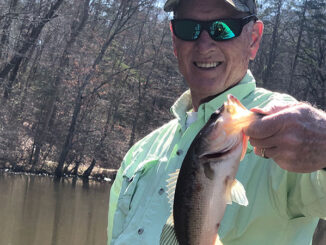
Yellowfin tuna are fun to catch, tasty to eat
Yellowfin tuna (Thunnus albacares) swim throughout all tropical and subtropical oceans of the earth. Recreational anglers across the globe chase them with trolling lures and pitch baits. These fish are fun to catch and excellent table fare.
Among the largest of all tuna species, yellowfin tuna grow bigger than 400 pounds. Their name comes from the bright yellow color of their second dorsal fin, their anal fin, and the smaller fins between those fins and the tail. The main body appears a dark metallic blue, fading into silver on the fish’s belly. Twenty vertical lines, which vary in visibility, run along the belly.
The oldest yellowfin tunas have disproportionately long second dorsal and anal fins. So much so, that for decades, fisheries biologists believed they were a different species of tuna entirely.
Often misidentified as a pelagic fish, yellowfin are actually epipelagic, meaning they live in the open ocean, or pelagic zone, but spend the majority of their lives above the thermocline in the upper layer of that zone. This upper layer, called the epipelagic zone, is usually no deeper than 330 feet. However, yellowfin tuna do infrequently dive to depths as deep as 3800 feet.
During certain times of the year in certain regions, and under the right conditions, yellowfin tuna swim very close to shore. This expands the numbers of anglers that can target them, as smaller boats can reach them when they are closer to shore.
Yellowfin tuna are a schooling species, and their schools often travel with schools of similarly sized fish in a variety of species. It’s common to find them schooling with other tunas, dolphinfish, and even larger fish like billfish and sharks.
Yellowfin eat many fish that also prey on them
In some regions of the world, yellowfin show up in large numbers for several years, then disappear for years. Most fisheries biologists believe this is mainly due to the species temporarily finding more suitable conditions in other areas, which change due to weather and other factors.
Anglers trolling for yellowfin tuna never miss the opportunity to troll past floating debris like logs, pallets, or other floating objects. These objects attract baitfish, so tuna are always nearby. Likewise, offshore anglers who encounter grass lines on the surface often throw surface plugs or pitch baits all around the edges, drawing strikes from these fish.
Yellowfin eat mostly zooplankton for the first few weeks of their lives. They then turn to other fish and squid. They are skilled hunters and fast swimmers, easily chasing down and devouring flying fish, sardines, small mackerel, and other fish. As they get larger, smaller members of the tuna family become prey.
When younger, yellowfins commonly become food for larger tuna, seabirds, wahoo, sharks, and billfish.
They are extremely strong swimmers. These fish can reach speeds of 50 miles per hour, and can maintain a high rate of speed for long durations. This offers them an advantage over fish chasing them, and fish they are chasing.
NC/SC state records have both stood since 1979
As table fare, yellowfin are often prepared as sashimi and other raw dishes. Another popular way of preparing yellowfin is to sear it on the grill.
Despite their telltale yellow fins, anglers sometimes misidentify yellowfins as bluefin tuna, albacore, and bigeye tuna.
The North Carolina state record yellowfin tuna weighed 237 pounds. James Mixon, Jr. caught the fish off Cape Lookout in 1979. South Carolina’s state record came offshore of Charleston in 1979. T.C. Lewis of Mt. Pleasant caught the fish, which weighed 241 pounds, 12 ounces.





Be the first to comment